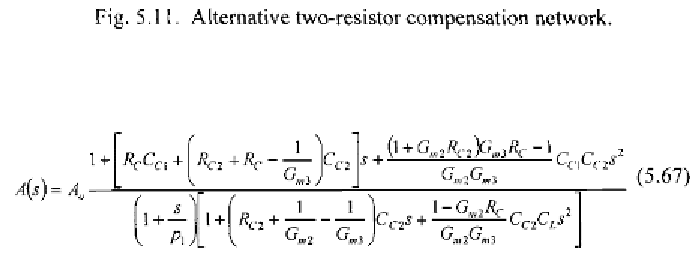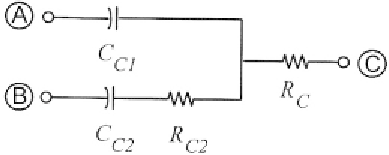Environmental Engineering Reference
In-Depth Information
The transfer function of the amplifier in Fig. 5.7, using the compensation
network in Fig. 5.11 becomes
The above shows that the zeros can both be made negative and their
values adjusted to exactly cancel the two higher poles. Hence, by setting
and equating the coefficients of the second-order polynomials we get
67) now has a single pole.
This means that a suitable value of can be chosen to maximise the gain-
bandwidth product, allowing it to reach the same order of magnitude as an
optimised two-stage Miller-compensated amplifier. Again must be
higher than so that the compensation elements will be positive.
Moreover, it is worth noting that relations (5.68)-(5.70) are independent of
and, ideally, the compensation capacitors are also independent of the
load capacitor.
The transfer function of the amplifier in (5
.







